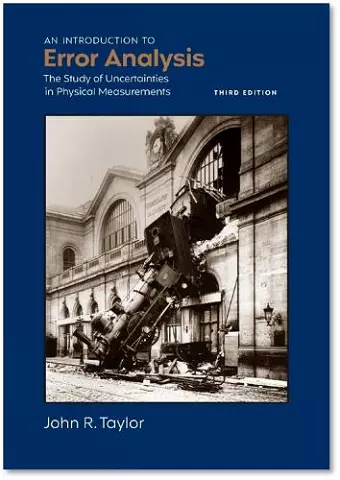An Introduction to Error Analysis, third edition
The study of uncertainties in physical measurements
Format:Hardback
Publisher:University Science Books,U.S.
Published:26th Oct '22
Currently unavailable, and unfortunately no date known when it will be back
This hardback is available in another edition too:
- Paperback£52.99(9781940380087)

This remarkable text by John R. Taylor has been a non-stop best-selling international hit since it was first published forty years ago. However, the two-plus decades since the second edition was released have seen two dramatic developments; the huge rise in popularity of Bayesian statistics, and the continued increase in the power and availability of computers and calculators. In response to the former, Taylor has added a full chapter dedicated to Bayesian thinking, introducing conditional probabilities and Bayes’ theorem. The several examples presented in the new third edition are intentionally very simple, designed to give readers a clear understanding of what Bayesian statistics is all about as their first step on a journey to become practicing Bayesians. In response to the second development, Taylor has added a number of chapter-ending problems that will encourage readers to learn how to solve problems using computers. While many of these can be solved using programs such as Matlab or Mathematica, almost all of them are stated to apply to commonly available spreadsheet programs like Microsoft Excel. These programs provide a convenient way to record and process data and to calculate quantities like standard deviations, correlation coefficients, and normal distributions; they also have the wonderful ability – if students construct their own spreadsheets and avoid the temptation to use built-in functions – to teach the meaning of these concepts.
The new chapter on Bayesian statistics is extremely clear and well written, and is another one of John Taylor’s fabulous expositions. I enjoyed how Taylor develops the subject by using it to answer questions about the effectiveness of a vaccine. Before reading this chapter I wondered what assumptions are needed to derive a numerical value for a vaccine’s effectiveness, and I also wondered about the data needed and the methods used. Lo and behold, all my questions were answered in this chapter! I definitely will buy the new edition of Error Analysis and I look forward to delving into the Bayesian statistics. -- Mark Semon, Bates College
ISBN: 9781940380148
Dimensions: 244mm x 172mm x 20mm
Weight: unknown
380 pages
3rd Revised edition